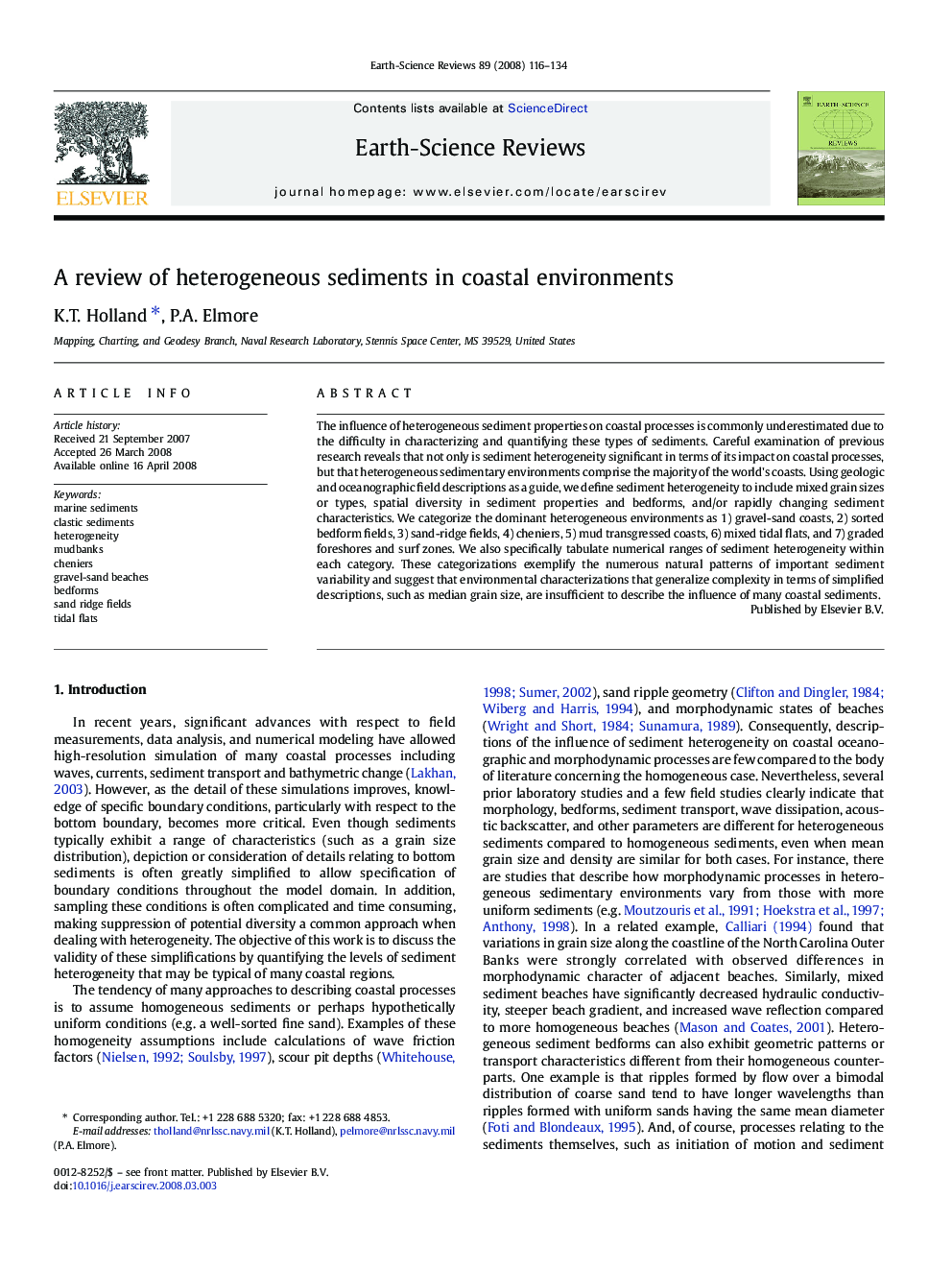| Article ID | Journal | Published Year | Pages | File Type |
|---|---|---|---|---|
| 4726280 | Earth-Science Reviews | 2008 | 19 Pages |
The influence of heterogeneous sediment properties on coastal processes is commonly underestimated due to the difficulty in characterizing and quantifying these types of sediments. Careful examination of previous research reveals that not only is sediment heterogeneity significant in terms of its impact on coastal processes, but that heterogeneous sedimentary environments comprise the majority of the world's coasts. Using geologic and oceanographic field descriptions as a guide, we define sediment heterogeneity to include mixed grain sizes or types, spatial diversity in sediment properties and bedforms, and/or rapidly changing sediment characteristics. We categorize the dominant heterogeneous environments as 1) gravel-sand coasts, 2) sorted bedform fields, 3) sand-ridge fields, 4) cheniers, 5) mud transgressed coasts, 6) mixed tidal flats, and 7) graded foreshores and surf zones. We also specifically tabulate numerical ranges of sediment heterogeneity within each category. These categorizations exemplify the numerous natural patterns of important sediment variability and suggest that environmental characterizations that generalize complexity in terms of simplified descriptions, such as median grain size, are insufficient to describe the influence of many coastal sediments.
